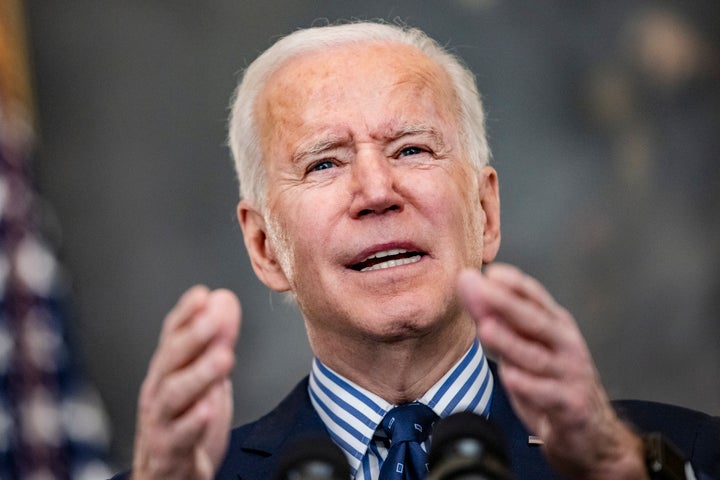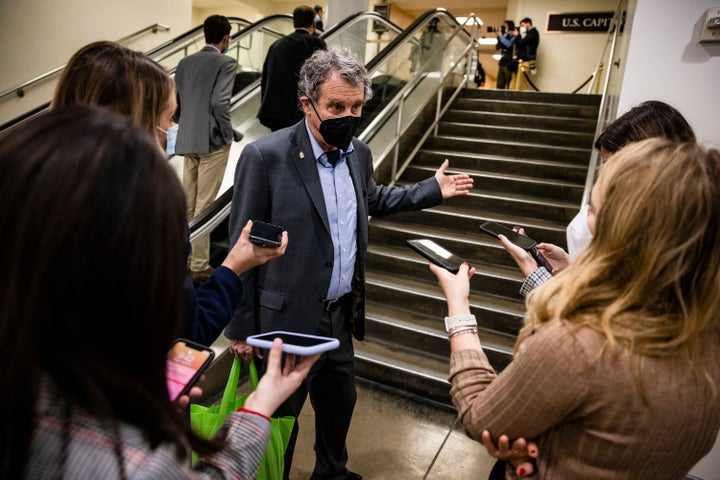American families would receive regular payments that would add up to as much as $3,600 per child per year from the federal government as part of the American Rescue Plan, the $1.9 trillion COVID-19 relief bill the House is set to pass on Tuesday.
The bill would send $1,400 stimulus checks to the vast majority of households. But there would be more checks after that ― a series of payments to parents of minor children, for the rest of the year, thanks to Democratic changes to the child tax credit.
Instead of just lowering family tax bills or providing a refund, the legislation tells the IRS to pay the benefit in advance, on a “periodic” basis. Households with children would start receiving the regular payments, worth hundreds of dollars, starting sometime after July 1.
Democrats started pushing the concept of a monthly payment in 2018, touting studies that showed the extra money for parents would slash child poverty. But even higher-income families will receive payments if President Joe Biden signs the bill into law.
“Politically, it’s a good look,” said Elaine Maag of the Tax Policy Center. “It’s definitely a broad benefit designed to reach a lot of people.”
The legislation increases the maximum age for an eligible child from 16 to 17 years old, makes the credit available even to those with no earned income, and increases the value of the credit for low-to-middle-income earners.
Families with a joint income of less than $150,000 would receive $3,600 per child under the age of 6, and up to $3,000 for children between 6 and 17 years old. Two-earner households earning up to $400,000 annually would still receive periodic payments as well, according to Senate aides, totaling $2,000 per child — the current value of the credit. (The IRS may have some leeway on what the advance payment program ultimately looks like.)

It’s been a long time coming for family advocates.
“The United States has not since World War II invested in any kind of child care infrastructure,” said Julie Kashen, an expert on women’s economic justice at liberal think tank The Century Foundation.
“For decades now we have basically been asking families to go it alone and figure things out on their own, and our workplace policies also don’t support caregivers,” Kashen said. “We have no national paid leave policy. We basically built a system for people who have someone else to care for their family.”
Rep. Rosa DeLauro (D-Conn.) has been pushing to make the child tax credit more refundable since the early 2000s. In 2017, while Democrats were in the minority, she also sponsored legislation to increase the credit for children younger than 6.
That year, Republicans did double the value of the credit and increased its “phaseout threshold” to the $400,000 level for joint filers. The expansion partly offset the loss of personal exemptions, which Republicans scrapped in their effort to simplify the tax code.
Several Republicans said they liked the idea of expanding the child tax credit. However, none supported the Democratic proposal, which is modeled on the American Family Act, a bill first introduced in 2018 by Sens. Michael Bennet (D-Colo.) and Sherrod Brown (D-Ohio). Every Republican has voted against the broader rescue package so far; Senate Minority Leader Mitch McConnell (R-Ky.) called the child tax provisions “a brand-new, sprawling cash welfare program.”
Democrats’ proposal would significantly reduce child poverty — not only because of the expanded checks, but because they are getting rid of the income-based phase-in for the benefit. Americans won’t need to have any income in order to qualify.
That’s been of particular concern during the coronavirus pandemic, as many American families have struggled to maintain employment and support their families without adequate child care or consistent schooling options in place.
“Research shows — and certainly anecdotal evidence shows — that people need help throughout the year, and families who haven’t been able to accumulate savings, they really need some kind of cushions,” said Amy Matsui with the National Women’s Law Center. “Those costs can really snowball.”

The bill tells the IRS to set up a portal where families could opt out of the regular payments or enter personal information in order to receive the payments if they don’t file taxes because they have low incomes.
The legislation originally called for monthly payments, but Democrats used the word “periodic” to avoid breaking obscure Senate budget rules. Periodic payments are somehow allowed, even though monthly payments might not have been.
The legislation only boosts the credit for one year, but Democrats have said they intend to follow up with another bill to make it permanent. They made the policy temporary partly because of its $100 billion annual cost.
Democrats have not laid out a plan for making the benefits permanent, but they have been exuding confidence that doing so won’t be a problem. They also have a long list of other family-oriented policies they want to get through Congress, including a national paid leave program, universal preschool and a child care entitlement.
“We’re really confident that Congress is not going to want to double the child poverty rate in this country” by discontinuing the child benefit, Bennet told HuffPost last month.
It’s also possible that lawmakers won’t want to halt the checks going to every middle-class household in the country. More than 90% of taxpayers with children already receive the credit. For most, it simply reduces their tax bills. But it could soon become a much more overt recognition of the costs of raising children.
“When you are pregnant, everyone is so excited and there are baby showers and parties and support. But then you have your baby and you’re on your own,” Kashen said. “It’s expensive to raise a child … there are so many different ways this money can be used that can really help.”
